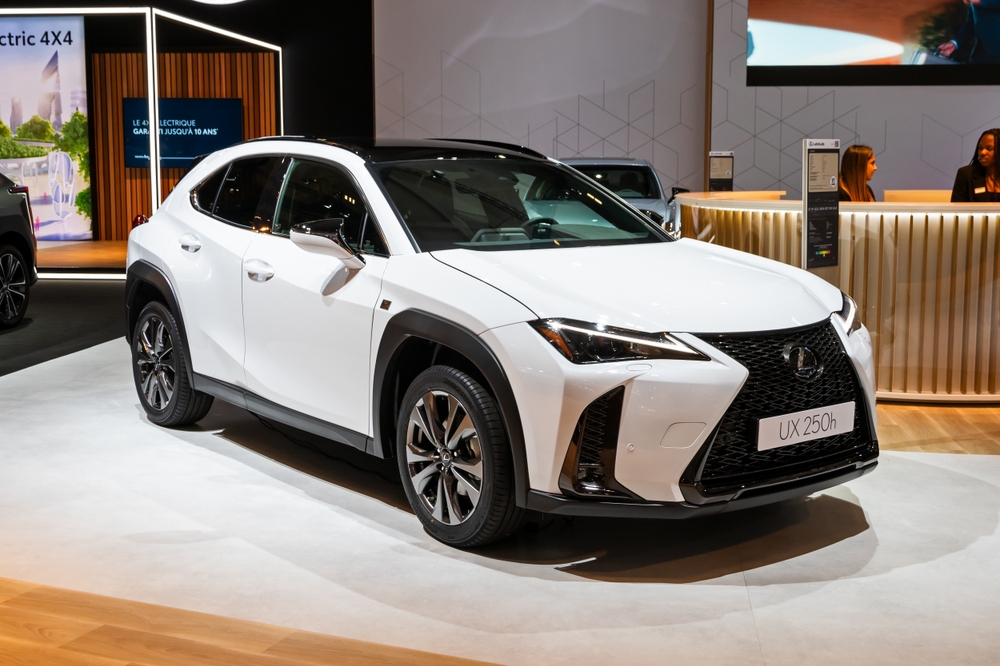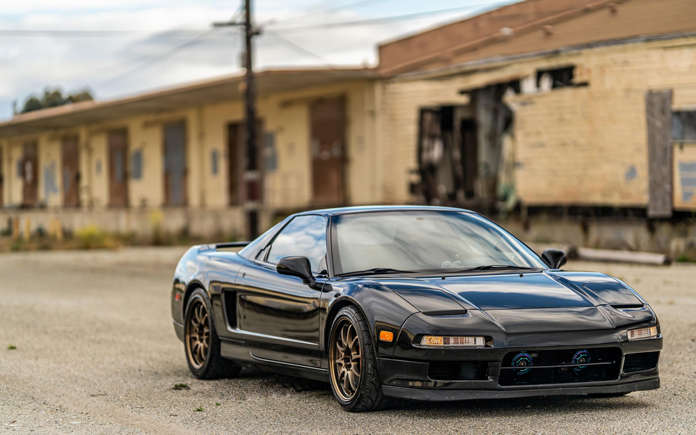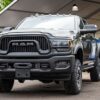In the world of SUVs, one of the biggest expectations is having ample, flexible cargo space to handle everything from family vacations to weekly grocery runs. However, not all SUVs live up to this expectation, with some designs leaving drivers frustrated by awkward layouts, limited volume, and inaccessible storage areas. While these vehicles might excel in other categories, such as performance, safety, or technology, their cargo spaces often fall short of what many buyers look for in an SUV. When it comes to usability, a poorly designed cargo area can make an otherwise impressive vehicle feel inconvenient and impractical, limiting how well it serves drivers’ everyday needs.
From compact crossovers to full-size off-roaders, a surprising number of SUVs struggle with cargo space efficiency. Some models have minimal room due to bulky seat structures, while others make packing difficult with sloping roofs or high lift-over heights. For families, outdoor enthusiasts, or anyone who values space for gear and groceries, these design choices can make a big difference in daily convenience and vehicle satisfaction. This list covers SUVs that are notorious for their cramped, awkwardly shaped, or poorly thought-out cargo spaces, offering insight into why even popular models might not always hit the mark for storage.
Contents
Chevrolet Trax

The Chevrolet Trax has a compact design that severely limits its cargo space, especially with all seats in place. The rear cargo area is small, offering less room for larger items, which can be frustrating for those relying on ample storage for groceries or luggage. Its narrow and shallow cargo area makes stacking items difficult, often requiring users to pack carefully to maximize space. Additionally, the seats do not fold flat, resulting in an uneven cargo floor that further limits practical usage. These design flaws make it challenging for owners who need versatile storage options in a compact SUV.
Toyota Land Cruiser

While the Toyota Land Cruiser is known for its rugged off-road capabilities, its cargo space leaves much to be desired. With the third-row seats in use, cargo volume shrinks dramatically, making it unsuitable for families needing both passenger seating and ample storage space. The third-row seats are side-mounted rather than foldable into the floor, which limits usable cargo width and makes loading bulkier items difficult. Additionally, accessing the cargo space is hindered by a split rear door design, which can be inconvenient in tight parking spaces. These design issues make the Land Cruiser’s cargo space less practical for its size.
Subaru Crosstrek

The Subaru Crosstrek’s cargo space suffers due to its compact dimensions, which limit the overall volume for hauling items. Though its hatchback design is versatile, the space behind the rear seats is narrow and lacks depth, making it difficult to fit larger suitcases or equipment. When the seats are folded down, the cargo area remains uneven, reducing usable space for flat, bulky items. This limitation becomes especially noticeable on road trips or for outdoor enthusiasts who require extra gear storage. As a result, the Crosstrek’s design can disappoint those who expect more from an adventure-oriented SUV.
Hyundai Kona

Hyundai Kona’s stylish and compact design sacrifices significant cargo capacity, particularly with all seats in place. The Kona’s cargo area is narrow, with limited height and depth, restricting its usability for larger loads. Even with the rear seats folded, the floor remains somewhat raised, preventing a flat surface for loading. Additionally, the lift-over height is high, making it harder to load and unload heavier items. This combination of limited space and an awkward cargo layout makes the Kona less practical for families or individuals needing more versatile storage options.
Mazda CX-5

The Mazda CX-5 offers a sporty design and quality interiors but lacks substantial cargo space, especially when compared to its competitors. The cargo area is relatively shallow, making it difficult to load bulkier items, and it doesn’t offer a particularly wide opening, which can restrict access. When the rear seats are folded, the resulting space is uneven, which further hinders the loading of larger or flat items. Although the CX-5 excels in style and comfort, its limited cargo space can frustrate owners who need more practical storage solutions in a midsize SUV.
Honda HR-V

Honda HR-V’s cargo space is hindered by its compact design and awkward layout, which limits usable volume. While it features the “Magic Seat” system, which allows for versatile seating configurations, the overall cargo area remains quite narrow, limiting the number of larger items it can carry. The space becomes even more impractical when both rows are in use, providing limited room for groceries or luggage. Additionally, the sloping rear window reduces vertical space, making it difficult to fit taller items. These issues make the HR-V less than ideal for owners who prioritize storage in a compact SUV.
Jeep Renegade

The Jeep Renegade’s boxy design does not translate into substantial cargo space, as one might expect. The rear cargo area is relatively shallow and doesn’t extend far back, making it challenging to store larger items without folding down the seats. When the seats are down, the floor is uneven, reducing the practicality of the storage space further. Additionally, the high load floor makes loading heavier items more cumbersome. For an SUV marketed for adventurous lifestyles, the Renegade’s cargo layout can feel limiting, disappointing owners who need more from their storage capacity.
Nissan Kicks

Nissan Kicks offers impressive fuel economy and affordability, but its cargo space leaves much to be desired. With all seats in use, the rear cargo area is shallow, limiting the SUV’s ability to carry even moderately sized items. The floor is not entirely flat when the rear seats are folded, which reduces flexibility in loading longer items. Furthermore, the narrow width of the cargo space restricts its overall usability, making it harder to fit larger pieces of luggage or other equipment. For those who prioritize storage, the Kicks might feel impractical.
Ford EcoSport

Ford EcoSport’s unique rear side-hinged door design is one of its primary cargo-related drawbacks. The side-hinged door opens from the left, which can be inconvenient in parallel parking situations, as it requires more space to access. Additionally, the cargo space itself is minimal, especially when all seats are occupied. When folded, the seats do not create a completely flat cargo area, which makes loading flat items awkward. These design issues make the EcoSport less practical for users who need accessible and versatile cargo space in a compact SUV.
Mitsubishi Eclipse Cross

The Mitsubishi Eclipse Cross prioritizes style but at the expense of functional cargo space. Its sloped rear window reduces vertical space, limiting the types of items that can fit comfortably in the cargo area. Even with the rear seats down, the Eclipse Cross has a limited flat surface area, making it difficult to load larger items. Additionally, the high cargo floor increases the lift-over height, adding to the inconvenience. These design choices make it less suitable for drivers needing ample and practical cargo capacity.
Fiat 500X

Fiat 500X offers an urban-friendly design but falls short when it comes to cargo space. The rear cargo area is small and shallow, making it challenging to store more than a few shopping bags or a carry-on suitcase. Folding down the seats doesn’t fully resolve the issue, as the layout remains uneven, restricting flexibility for larger or flat items. Its compact design is ideal for city driving, but the 500X’s impractical cargo space makes it less suitable for those who need versatile storage solutions.
Mini Countryman

The Mini Countryman tries to combine compact design with SUV versatility, but its cargo space remains limited. The trunk area is narrow and lacks depth, which restricts its usability for families or those needing ample storage. When the seats are down, the cargo floor is uneven, reducing the available flat surface for larger items. While the Countryman appeals to those who love Mini’s unique style, its cargo layout might feel restrictive for owners who value storage practicality in an SUV.
Lexus UX

Lexus UX is a luxury compact SUV that underwhelms in the cargo space department. With its rear seats up, the cargo volume is quite limited, restricting its utility for hauling even medium-sized items. The narrow and shallow cargo area makes it hard to store bulkier items, and folding down the seats still doesn’t create an ideal loading space due to an uneven floor. Additionally, the UX’s sloped roofline reduces available vertical space, further limiting the type of items that can fit. These issues make it less suitable for luxury buyers who still need practical cargo options.
This article originally appeared on MyCarMakesNoise.
More from MyCarMakesNoise
20 Expensive Hybrid Cars That Disappoint on Value

When it comes to hybrid cars, many buyers expect a blend of fuel efficiency and performance, especially at higher price points. Unfortunately, not all hybrids live up to their hefty price tags. Read More.
10 Little-Known Facts About the Iconic Ford Mustang

The Ford Mustang, an enduring icon of American automotive culture, has captivated car enthusiasts since its debut in 1964. Known for its sleek design, powerful performance, and unmistakable emblem, the Mustang’s rich history is filled with intriguing details that have contributed to its legendary status. Read More.
15 Misconceptions About SUVs That Need to End

SUVs have become a popular choice for drivers, but there are plenty of misconceptions surrounding these vehicles that can be misleading. Whether it’s about safety, fuel efficiency, or handling, many drivers hold onto outdated or false beliefs. Read More.














